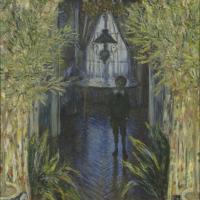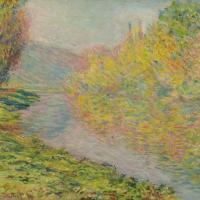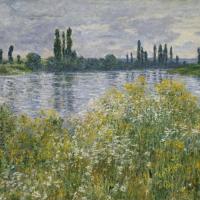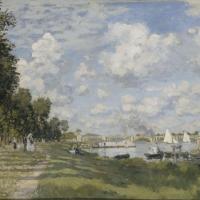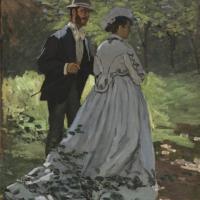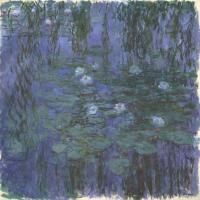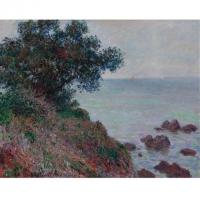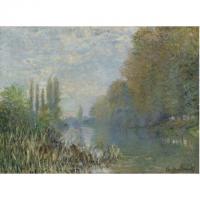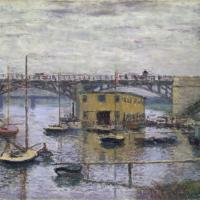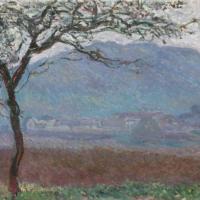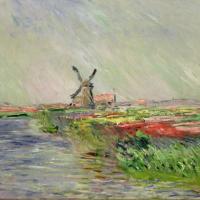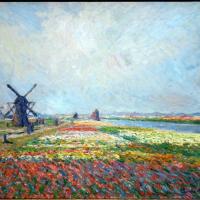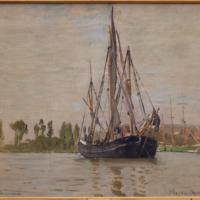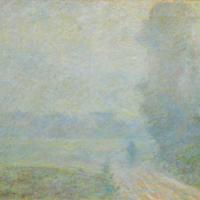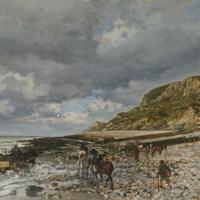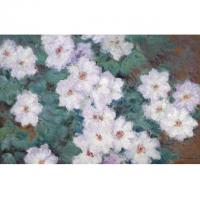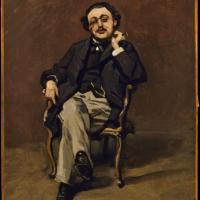Claude Monet
Default
24
A Corner Of The Apartment
$450.00
A Seascape
$450.00
Automne Jeufosse
$450.00
Bassin D Argenteuil
$450.00
Bazille And Camille
$450.00
Blue Water Lilies
$510.00
Boat Lying At Low Tide
$450.00
Bords de la Mediterranee
$450.00
Bords de la Mediterranee
$450.00
Champ A Giverny
$450.00
Champ De Bl
$450.00
Champ De Tulipes En Hollande
$450.00
Chasse
$450.00
Clematites
$450.00
Coin Du Bassin Aux Nymphe s
$450.00
Columboh07 04
$450.00
Dr. Leclench
$450.00
Claude Monet
Claude Monet (1840-1926)
Oscar-Claude Monet (14 November 1840 – 5 December 1926) was a French painter, a founder of French Impressionist painting and the most consistent and prolific practitioner of the movement's philosophy of expressing one's perceptions before nature, especially as applied to plein air landscape painting. The term "Impressionism" is derived from the title of his painting Impression, soleil levant (Impression, Sunrise), which was exhibited in 1874 in the first of the independent exhibitions mounted by Monet and his associates as an alternative to the Salon de Paris.
Monet's ambition of documenting the French countryside led him to adopt a method of painting the same scene many times in order to capture the changing of light and the passing of the seasons. From 1883, Monet lived in Giverny, where he purchased a house and property and began a vast landscaping project which included lily ponds that would become the subjects of his best-known works. In 1899, he began painting the water lilies, first in vertical views with a Japanese bridge as a central feature and later in the series of large-scale paintings that was to occupy him continuously for the next 20 years of his life.
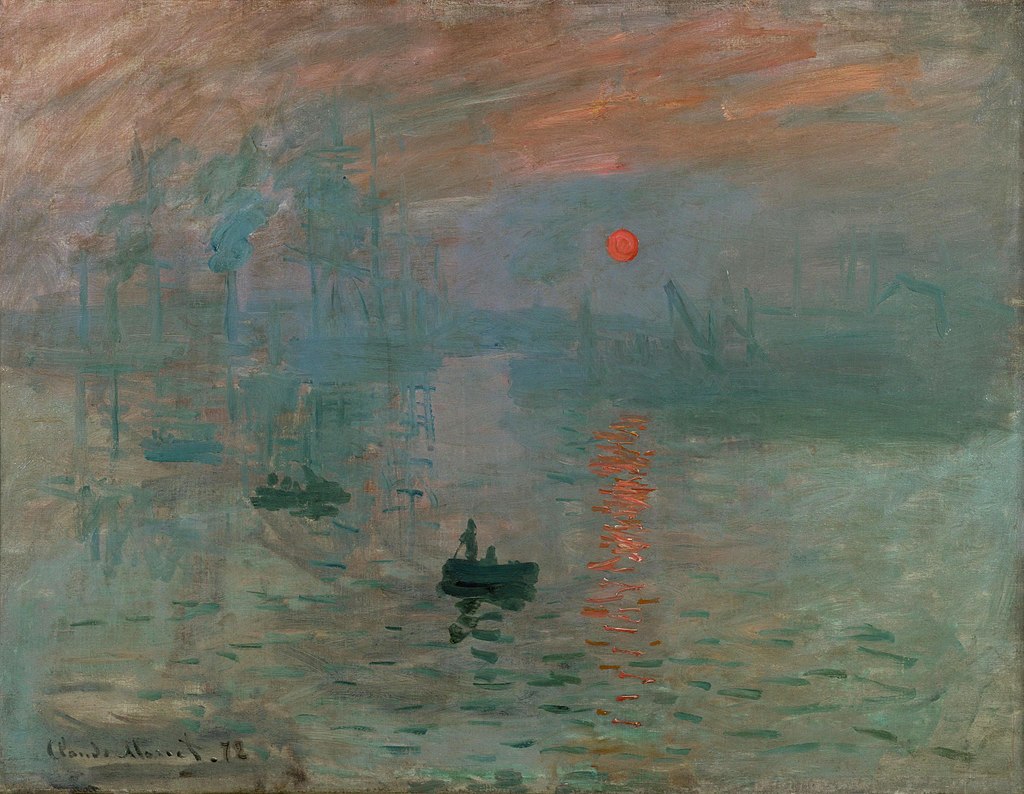
Impression, Sunrise
In addition to Impression: Sunrise (pictured above), Monet presented four oil paintings and seven pastels. Among the paintings he displayed was The Luncheon (1868), which features Camille Doncieux and Jean Monet, and which had been rejected by the Paris Salon of 1870. Also in this exhibition was a painting titled Boulevard des Capucines, a painting of the boulevard done from the photographer Nadar's apartment at no. 35. Monet painted the subject twice, and it is uncertain which of the two pictures, that now in the Pushkin Museum in Moscow, or that in the Nelson-Atkins Museum of Art in Kansas City, was the painting that appeared in the groundbreaking 1874 exhibition, though more recently the Moscow picture has been favoured. Altogether, 165 works were exhibited in the exhibition, including 4 oils, 2 pastels and 3 watercolours by Morisot; 6 oils and 1 pastel by Renoir; 10 works by Degas; 5 by Pissarro; 3 by Cézanne; and 3 by Guillaumin. Several works were on loan, including Cézanne's Modern Olympia, Morisot's Hide and Seek (owned by Manet) and 2 landscapes by Sisley that had been purchased by Durand-Ruel.
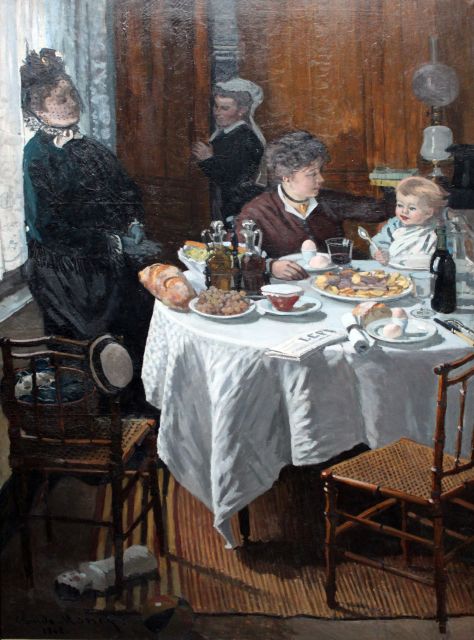
The Luncheon
The total attendance is estimated at 3500, and some works did sell, though some exhibitors had placed their prices too high. Pissarro was asking 1000 francs for The Orchard and Monet the same for Impression: Sunrise, neither of which sold. Renoir failed to obtain the 500 francs he was asking for La Loge, but later sold it for 450 francs to Père Martin, dealer and supporter of the group.

Monet has been described as "the driving force behind Impressionism". Crucial to the art of the Impressionist painters was the understanding of the effects of light on the local colour of objects, and the effects of the juxtaposition of colours with each other. Monet's long career as a painter was spent in the pursuit of this aim.
In 1856, his chance meeting with Eugene Boudin, a painter of small beach scenes, opened his eyes to the possibility of plein-air painting. From that time, with a short interruption for military service, he dedicated himself to searching for new and improved methods of painterly expression. To this end, as a young man, he visited the Paris Salon and familiarised himself with the works of older painters, and made friends with other young artists. The five years that he spent at Argenteuil, spending much time on the River Seine in a little floating studio, were formative in his study of the effects of light and reflections. He began to think in terms of colours and shapes rather than scenes and objects. He used bright colours in dabs and dashes and squiggles of paint. Having rejected the academic teachings of Gleyre's studio, he freed himself from theory, saying "I like to paint as a bird sings."
In 1877 a series of paintings at St-Lazare Station had Monet looking at smoke and steam and the way that they affected colour and visibility, being sometimes opaque and sometimes translucent. He was to further use this study in the painting of the effects of mist and rain on the landscape. The study of the effects of atmosphere was to evolve into a number of series of paintings in which Monet repeatedly painted the same subject (such as his water lilies series) in different lights, at different hours of the day, and through the changes of weather and season. This process began in the 1880s and continued until the end of his life in 1926.
His first series exhibited as such was of Haystacks, painted from different points of view and at different times of the day. Fifteen of the paintings were exhibited at the Galerie Durand-Ruel in 1891. In 1892 he produced what is probably his best-known series, twenty-six views of Rouen Cathedral. In these paintings Monet broke with painterly traditions by cropping the subject so that only a portion of the façade is seen on the canvas. The paintings do not focus on the grand Medieval building, but on the play of light and shade across its surface, transforming the solid masonry.
Other series include Poplars, Mornings on the Seine, and the Water Lilies that were painted on his property at Giverny. Between 1883 and 1908, Monet traveled to the Mediterranean, where he painted landmarks, landscapes, and seascapes, including a series of paintings in Venice. In London he painted four series: the Houses of Parliament, London, Charing Cross Bridge, Waterloo Bridge, and Views of Westminster Bridge.
In 2004, London, the Parliament, Effects of Sun in the Fog (Londres, le Parlement, trouée de soleil dans le brouillard) (1904), sold for US$20.1 million. In 2006, the journal Proceedings of the Royal Society published a paper providing evidence that these were painted in situ at St Thomas' Hospital over the river Thames.
Falaises près de Dieppe (Cliffs near Dieppe) has been stolen on two separate occasions: once in 1998 (in which the museum's curator was convicted of the theft and jailed for five years and two months along with two accomplices) and most recently in August 2007. It was recovered in June 2008.
Monet's Le Pont du chemin de fer à Argenteuil, an 1873 painting of a railway bridge spanning the Seine near Paris, was bought by an anonymous telephone bidder for a record $41.4 million at Christie's auction in New York on 6 May 2008. The previous record for his painting stood at $36.5 million. Just a few weeks later, Le bassin aux nymphéas (from the water lilies series) sold at Christie's 24 June 2008 auction in London, lot 19, for £36,500,000 ($71,892,376.34) (hammer price) or £40,921,250 ($80,451,178) with fees, nearly doubling the record for the artist and representing one of the top 20 highest prices paid for a painting at the time.
In October 2013, Monet's paintings, L'Eglise de Vetheuil and Le Bassin aux Nympheas, became subjects of a legal case in New York against NY-based Vilma Bautista, one-time aide to Imelda Marcos, wife of dictator Ferdinand Marcos, after she sold Le Bassin aux Nympheas for $32 million to a Swiss buyer. The said Monet paintings, along with two others, were acquired by Imelda during her husband's presidency and allegedly bought using the nation's funds. Bautista's lawyer claimed that the aide sold the painting for Imelda but did not have a chance to give her the money. The Philippine government seeks the return of the painting. Le Bassin aux Nympheas, also known as Japanese Footbridge over the Water-Lily Pond at Giverny, is part of Monet's famed Water Lilies series.


